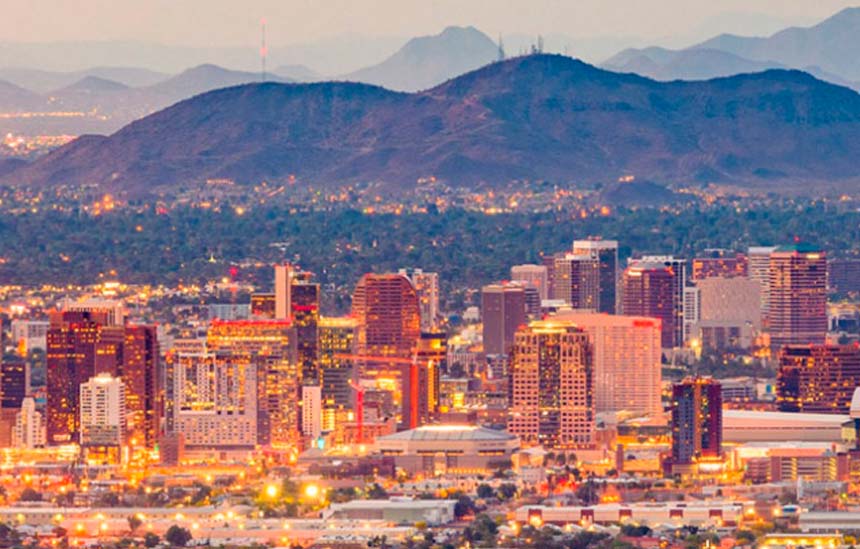Colorado River rights and climate change have some raising the alarm about water
Phoenix’s suburban West Valley is in a 23-year megadrought, but it doesn’t look like it. New planned communities, distribution centers, and warehouses keep sprouting, along with highway widening projects to support them. At the northern edge of the Sonoran Desert, it’s not clear where the water for all those ventures will come from.
Phoenix has a footprint of about 518 square miles, and its Buckeye suburb, one of America’s most quickly growing cities, is considerably larger. Since 2000, the population skyrocketed from 6,500 to more than 111,000, and the city’s master plan includes 640 square miles for more than 300,000 new residents.
At the same time, rising temperatures mean less water for the region’s reservoirs. Arizona’s rights to Colorado River water rank near the bottom of the seven basin states. The greater Phoenix region has turned to groundwater to fill in the water supply gaps, and many are sounding the alarm that there isn’t enough.
Buckeye Mayor Eric Orsborn, however, says skeptics don’t grasp how well Arizona manages water. Buckeye has a drought management plan, is pouring investment dollars into water reuse and recycling projects, and is searching for water to import.
Arizona at a Tipping Point
Arizona Gov. Katie Hobbs is not as sanguine, citing a new report that shows the state at a tipping point. Almost all West Valley groundwater is already allocated, and the commitments made may exceed the available water. Many of Arizona’s growth regulations were based on data from the years before most believed the Colorado River could run dry.
Hobbs says the state needs to face the region’s water reality or action to curb growth may be required. And some action is already happening.
Working Toward Solutions
Phoenix uses much less water now than it used to, even with the boom, and some claim growth has been decoupled from water demand.
Buckeye plans to import water from other basins, and many cities have been storing their Colorado River water allotments in aquifers. In the West Valley, conservation and recycling are well-developed, and there’s talk of building a desalination plant on Mexico’s Sea of Cortez and piping water across the border.
Kathy Ferris, former director of the Arizona Department of Water Resources, warns that current growth is not sustainable. Indeed, the Rio Verde Foothills already ran out of water. Water was being trucked in from Scottsdale, three hours away, but Scottsdale cut off Rio Verde due to diminishing supplies.
Some new home construction is continuing, even with residents rationing water. Scottsdale recently agreed to reinstate some water deliveries, but residents are thirsty for a more permanent solution.
Decentralized Treatment Works
In arid communities with high demand for water, decentralized treatment offers a lifeline. Placing smaller-scale desalination plants at the point of need is a way to virtually increase the amount of available water.
Additionally, vast supplies of brackish groundwater lie waiting in aquifers, even far inland, and it’s less expensive to desalinate than seawater. Both can allow communities to prosper even with less fresh water.
In Alice, Texas, a Seven Seas Water Group project will desalinate the city’s brackish groundwater at a lower price than the city pays to pipe in water. No capital expenditure was required for the project, and long-term operations and maintenance are included. Contact Seven Seas to learn more about Water-as-a-Service® with flexible financing that helps growing communities get all the water they need.

